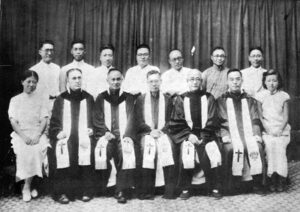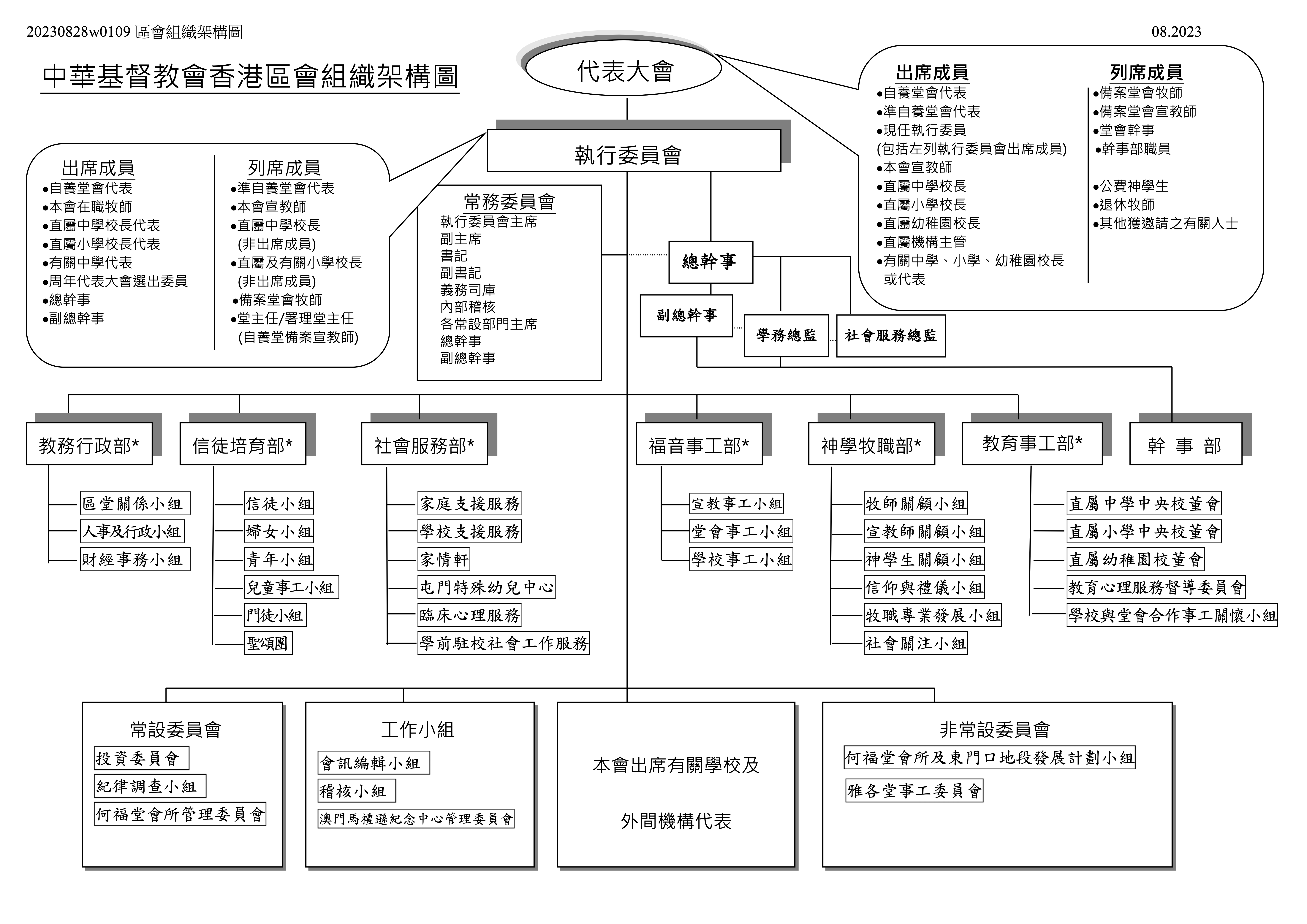Historical Perspective
 The formation of the Church of Christ in China can be traced back to 1918 when the General Assembly of the Presbyterian Church in China called a meeting in Nanjing to look into the desirability of forming a union of churches. Then the May 4 Movement (1919) aroused among the youth in China a great passion for nationalism, and some even suspected that Christianity had become a tool of cultural invasion by the imperialistic Western powers. Chinese students everywhere organized Anti-Christian Federation, directly challenging the roles and work of the churches. Some church leaders realized that the Church must be indigenous to shed off the insulting label of a “foreign religion.” In other words, local churches must become self-governing, self-supporting, and self-propagating in order to take root in the country and to minister to her people. Thus the representatives from the Presbyterian Church, the London Missionary Society and the Congregational Church agreed that they must stand united in order to be a more effective witness for Christ. Only a united church could contribute to China at a time when she was facing invasion from the outside and civil discontent from the inside.
The formation of the Church of Christ in China can be traced back to 1918 when the General Assembly of the Presbyterian Church in China called a meeting in Nanjing to look into the desirability of forming a union of churches. Then the May 4 Movement (1919) aroused among the youth in China a great passion for nationalism, and some even suspected that Christianity had become a tool of cultural invasion by the imperialistic Western powers. Chinese students everywhere organized Anti-Christian Federation, directly challenging the roles and work of the churches. Some church leaders realized that the Church must be indigenous to shed off the insulting label of a “foreign religion.” In other words, local churches must become self-governing, self-supporting, and self-propagating in order to take root in the country and to minister to her people. Thus the representatives from the Presbyterian Church, the London Missionary Society and the Congregational Church agreed that they must stand united in order to be a more effective witness for Christ. Only a united church could contribute to China at a time when she was facing invasion from the outside and civil discontent from the inside.
The representatives met to draw up a scheme of union. Representatives from other denominations soon joint in. Subsequently, the churches in Canton declared in July 1919 the formation of The Guangdong Synod of the Church of Christ in China. Representatives from the Swedish Missionary Society, the Congregational Church, the London Missionary Society, the Presbyterian Church and the United Brethren also joined the declaration. In 1922, the Provisional General Assembly met in Shanghai and the unity movement gained further momentum. In 1927, the First General Assembly of the newly formed Church of Christ in China, which was attended by representatives from all over China, met in St. Mary’s Hall, Shanghai. In all, 88 commissioners attended, of whom 66 were Chinese and 22 were missionaries representing 11 denominations and 53 District Associations. This laid the foundation of unity on which the Church of Christ in China was built. The newly formed Church adopted a four-tier system: on the national level, the General Assembly; on the provincial level, the Synods; on the district level, the Associations; and on the local level, the churches.

The Second General Assembly met in 1930 in Baihedong, Guangdong. The Third General Assembly was held in Gulangyu, Xiamen, in 1933. And the Fourth General Assembly was held in Qingdao in 1937. In a period of 10 years, five synods and 34 associations were added to the union, making a total of 16 synods, 85 associations, 2842 local churches, 454 ordained ministers and approximately 130,000 communicants. Thereafter, World War II broke out and general assembly meeting had to be suspended until the war was over. There was an intention of calling a meeting of the Fifth General Assembly after the war, but because of the chaotic aftermath of the war and the poor condition of the land transportation system, the idea had not been materialized. In October 1946, an extended joint meeting of the Board members and deacons was held in Nanjing with 57 representatives attending. At that time, nation-wide, there were 20 Synods, 105 associations and 170,000 communicants. Altogether 17 Mission Boards from the West covering three continents were involved in the unity movement. They were the United Church of Canada, Women Missionary Society of the United Church of Canada, Presbyterian Church of Canada, Women Missionary Society of the Presbyterian Church of Canada, Congregational Church of America, Presbyterian Church in the United States (South), The Reformed Church in America, Presbyterian Church in the U.S.A. (North), Evangelical and Reformed Church, United Brethren, London Missionary Society, British Baptist Missionary Society, British Presbyterian Church, Presbyterian Church in Ireland, Church of Scotland, Presbyterian Church of New Zealand, and Presbyterian Church of Australia.





